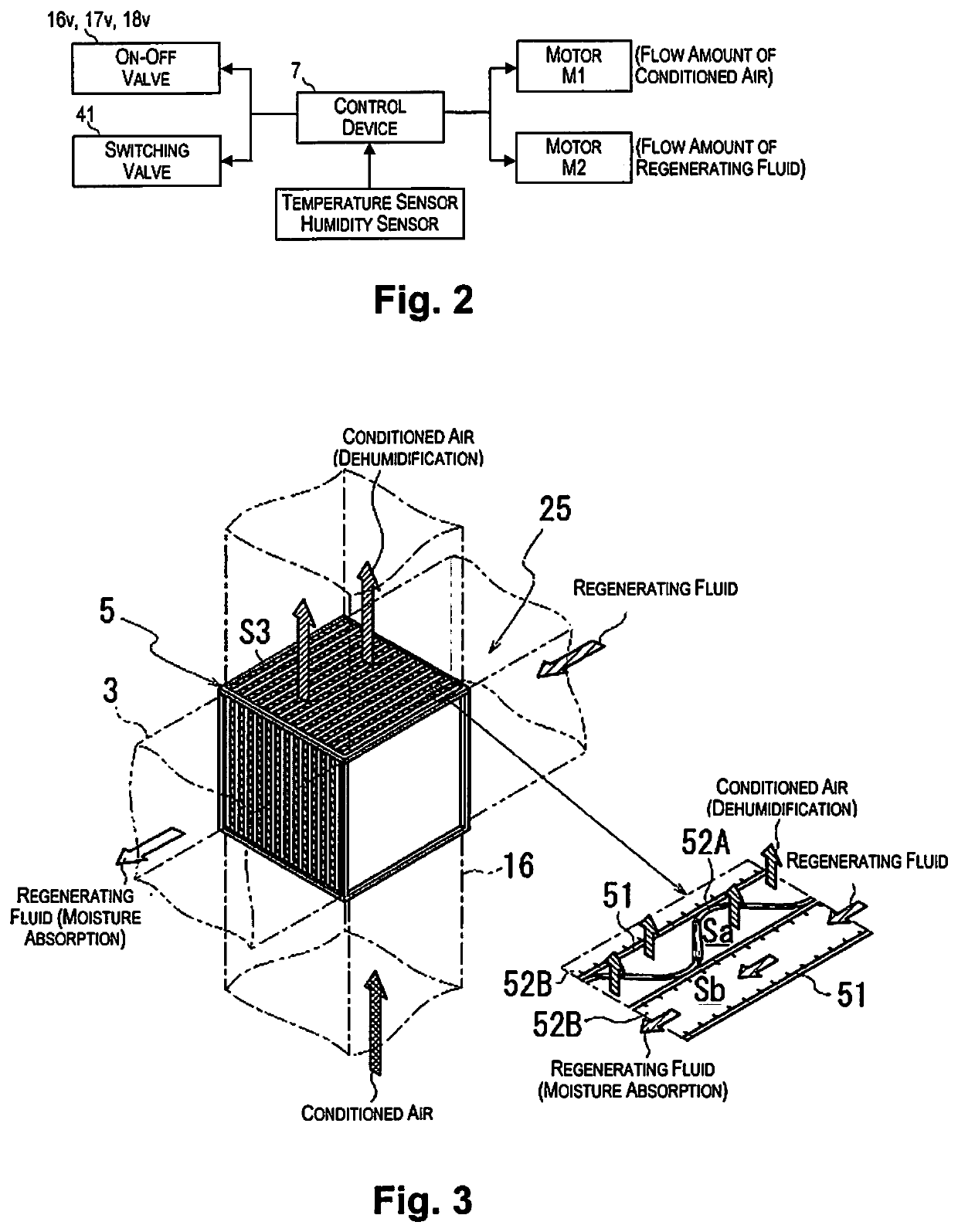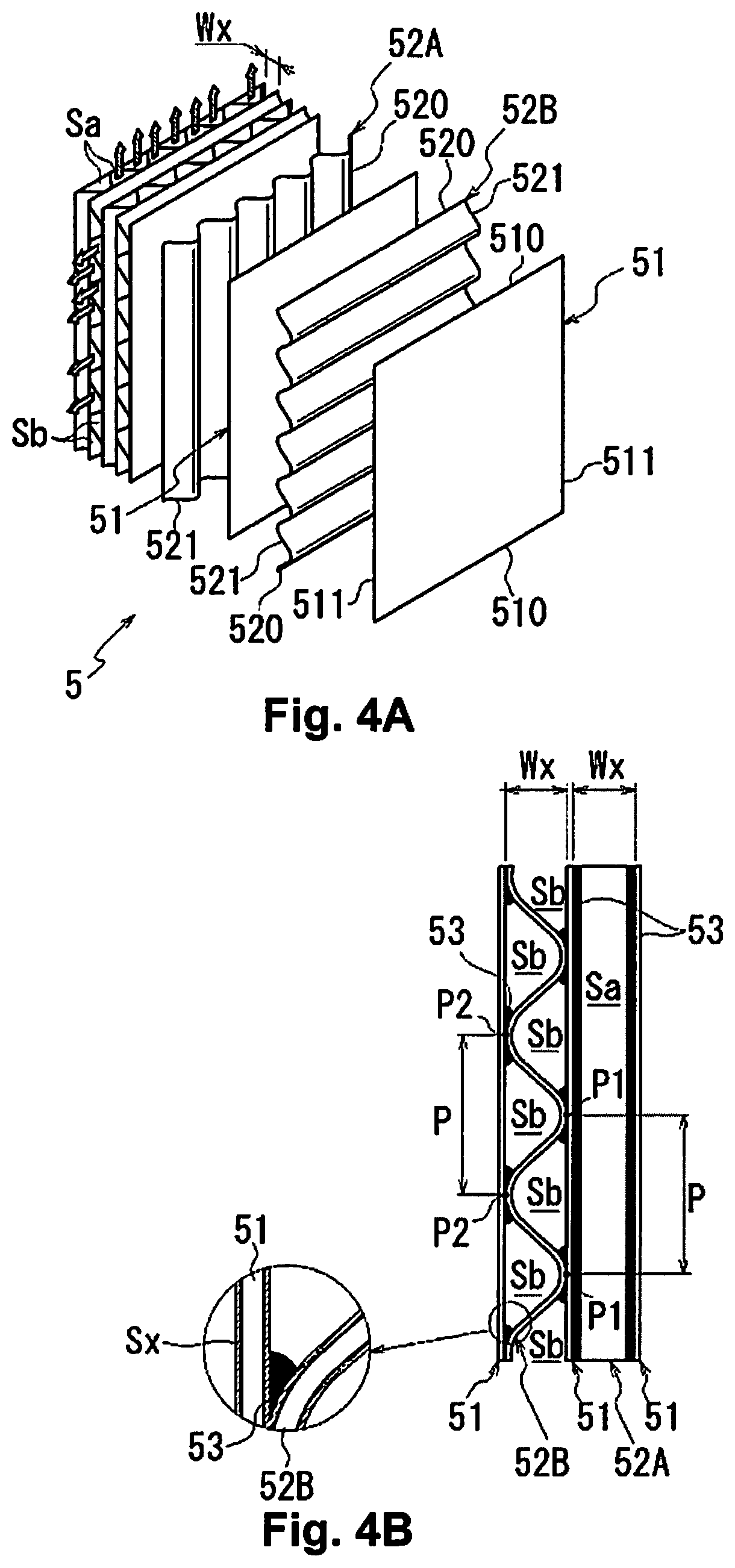Air conditioning device for vehicle
a technology for air conditioning devices and vehicles, which is applied to vehicle heating/cooling devices, vehicle components, transportation and packaging, etc., can solve the problems of inability to perform dehumidification of air and inability to achieve continuous dehumidification of air, and achieve the effect of suppressing sensible heat transfer
- Summary
- Abstract
- Description
- Claims
- Application Information
AI Technical Summary
Benefits of technology
Problems solved by technology
Method used
Image
Examples
first embodiment
[0028]Following, a first embodiment of the present invention is explained using an example of a case when the air subject to dehumidification is air for which the temperature is regulated (conditioned air) using a temperature regulating unit 10 of an air condition device 1.
[0029]FIG. 1 is a schematic block diagram of the air condition device for a vehicle 1 of the present embodiment.
[0030]FIG. 2 is a drawing for explaining the control object of a control device 7 provided in the air condition device for a vehicle 1. The control device 7 includes a computer that executes a predetermined control program and a memory that stores information used for various control programs and various control processes. The computer includes, for example, a central processing unit (CPU) or a micro-processing unit (MPU).
[0031]As shown in FIG. 1, the air conditioning device for a vehicle 1 has the temperature regulating unit 10 for regulating conditioned air (air for which the temperature has been regul...
second embodiment
[0229]Next, an air conditioning device 1A of a second embodiment of the present invention is explained.
[0230]FIG. 6 is a schematic block diagram of the air conditioning device for a vehicle 1A of the present embodiment.
[0231]As shown in FIG. 6, the air conditioning device 1A has a contact area 26 provided with the defroster duct 16 and the second flow path 3 in contact with each other's wall parts.
[0232]With this contact area 26, a desiccant part 5A is provided straddling the defroster duct 16 and the second flow path 3.
[0233]The desiccant part 5A is provided in a direction (orthogonal direction) intersecting with the flow through direction of the air in the defroster duct 16 and the second flow path 3.
[0234]FIGS. 7A and 7B are drawings for explaining the desiccant part 5A. FIG. 7A is a drawing for explaining the basic configuration and operation of the desiccant part 5A, and FIG. 7B is a perspective view for explaining the placement of the desiccant part 5A.
[0235]As shown in FIG. 7...
third embodiment
[0267]Next, an air conditioning device 1B of a third embodiment of the present invention is explained.
[0268]FIG. 8 is a schematic block diagram of the air conditioning device for a vehicle 1B of the present embodiment.
[0269]As shown in FIG. 8, the air conditioning device 1B has an intersection area 27 in which the second flow path 3 intersects with the flow passage 21 of the first flow path 2, and the desiccant part 5 is provided in this intersection area 27.
[0270]During the heating operation in winter, when the operating mode of the air conditioning device 1B is the desiccant mode, the air with a high temperature and absolute humidity incorporated from inside the vehicle interior 90 (internal air: air subject to dehumidification) flows through the intersection area 27. This internal air is air of a higher temperature than the regenerating fluid (external air: air for recovery) that flows through the second flow path 3. For that reason, the same as with the case of the first embodim...
PUM
 Login to View More
Login to View More Abstract
Description
Claims
Application Information
 Login to View More
Login to View More - R&D
- Intellectual Property
- Life Sciences
- Materials
- Tech Scout
- Unparalleled Data Quality
- Higher Quality Content
- 60% Fewer Hallucinations
Browse by: Latest US Patents, China's latest patents, Technical Efficacy Thesaurus, Application Domain, Technology Topic, Popular Technical Reports.
© 2025 PatSnap. All rights reserved.Legal|Privacy policy|Modern Slavery Act Transparency Statement|Sitemap|About US| Contact US: help@patsnap.com



